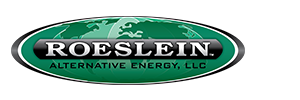Published by High Plains/Midwest Ag Journal
Smithfield Foods, Inc. is the first food company to participate in a new program with Environmental Defense Fund and Roeslein Alternative Energy to restore key prairie habitat for monarch butterflies, as described in this video. Their efforts are helping bring back the iconic insect, which has experienced a 95 percent population decline since the 1980s and could be listed as a threatened species in June 2019.
However, the monarch is currently undergoing what is anticipated to be the largest migration in 10 years.
“We’re excited about the potential of this unique partnership to support recovery of the beloved monarch butterfly and other pollinators that rely on healthy prairie habitat,” said David Wolfe, director of conservation strategies at EDF.
“In addition to providing habitat for bees, butterflies, birds and other wildlife, this program offers multiple other environmental and financial benefits,” Wolfe said. “The economic savings come from the benefits prairies have for helping hold water and nitrogen in the soil, and reducing potential waste. There are also added revenue opportunities that come from appropriately timed harvesting of the prairie for biomass that can be used for biogas generation of clean, natural gas.”
Attracted to the program’s dual benefits, Smithfield contributed $300,000 to fund the planting of native grasses and monarch-friendly native milkweed and wildflower species on 1,000 acres of land on and surrounding its hog farm in Missouri.
“We recognize that prairie is both an environmental and economic force,” said Kraig Westerbeek, senior director of Smithfield Renewables for Smithfield Foods. “While helping to protect the environment surrounding our farms, prairie is creating a new revenue opportunity as an alternative source of clean, renewable energy.”
Since the 1990s, Smithfield has explored ways to transform hog manure into renewable energy. Smithfield recently announced the nationwide expansion of these efforts through Smithfield Renewables, a platform that unifies, leads, and accelerates the company’s carbon reduction and renewable energy efforts, while helping meet its industry-leading goal to reduce greenhouse gas emissions 25 percent by 2025.
In Missouri, the food company has worked with RAE since 2014 to transform manure into renewable natural gas and is now looking to prairie grass as an alternative feedstock, particularly useful during the winter months.
“Generating energy from manure, prairie, or other biomass is pretty simple,” said Rudi Roeslein, founder and president of RAE. “Manure is captured in the underfloor of the hog buildings where scrapers are used to move and flush waste to an anaerobic digester or a covered lagoon, where anaerobic digestion takes place and solids are broken down to release methane gas that is transported to a central processing facility to be converted into renewable natural gas.”
“Harvested prairie is used to supplement hog manure as an alternative source of energy,” Roeslein said. “Prior to harvest, native prairie and cover crops provide an essential ecological service as critical habitat for pollinators and wildlife. This is an exciting new vision for renewable energy production.”
Together, Smithfield, EDF, and RAE are creating a compelling ecological and financial model for the growth and management of native prairie across the agricultural landscape. Ultimately, the unlikely collaborators are working to achieve a more resilient and ecologically diverse agricultural landscape.

